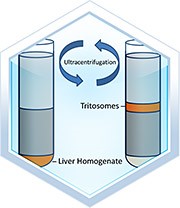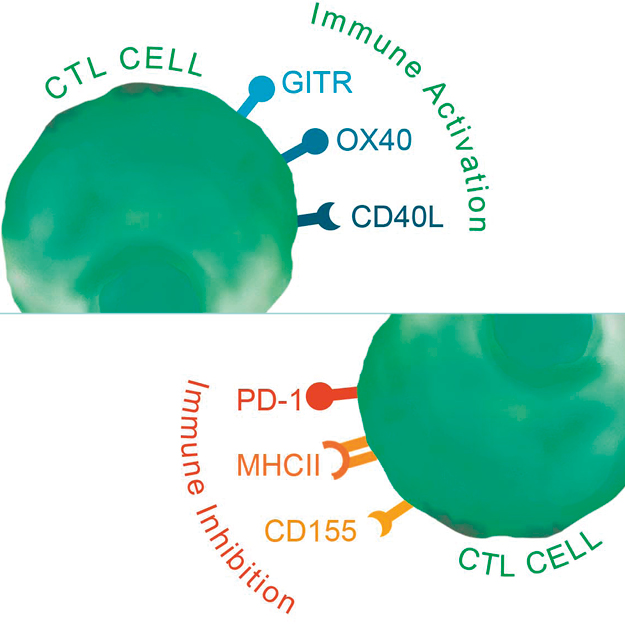Western blotting (WB) is an antibody-based method enabling sensitive detection of a protein of interest from other proteins present in biological samples. Detection is made after an initial separation step of the proteins according to their molecular weight, by PolyAcrylamide Gel Electrophoresis (PAGE). After immobilization onto a nitrocellulose, nylon or PVDF membrane, the protein of interest is revealed by its interaction with appropriate primary and secondary antibodies, followed by enzymatic (or fluorescent) methods.
Here are 2 tactics, that we’ve all been taught to keep in mind, but which will really help you towards designing successful WB protocols. A big thank you to Dana and Camillo (Rockland Immunochemicals) for their support here.
WB follows successive steps as described in tebu-bio’s antibody users designed Western blot protocol:
- Gathering the reagents needed for your SDS-PAGE and WB
- Sample preparation – cultured adherent mammalian cells in a 10cm dish
- SDS-PAGE and tank transfer to nitrocellulose membrane
- Blocking, antibody incubation, and detection

Routinely used, WB protocols however regularly need to be fine-tuned according to the properties of the primary antibody, the abundance and/or post-translational modification of the protein of interest (you might also like to take a look at the post “5 tips for phosphorylated protein Western blot“).
Tactic # 1 – Define the ideal “target protein / primary antibody” ratio
These “protein loading / antibody dilution” ratios are usually indicated in the publications or antibody datasheets. Nevertheless, the relative abundance of your protein of interest and the antibody titer are 2 essential parameters to adapt when designing your immunoassays (also true for ELISA, antibody arrays…).
- As a start, you might try 1 µg of purified protein or 10 µg of tissue or cell lysate expressing the protein of interest with 1 µg/mL of primary antibody solutions.
The ratio might then be adapted according to the first results and the expected levels of expression of the target protein:
- For low abundance proteins, the ratio might reach as much as 50 µg of total protein and at least 2 µg/mL antibody solutions.
- When high background or undesired cross-reactivity is anticipated, the ratio can be modulated by adjusting these parameters in the other direction.

Note that when the antibody used is validated for applications other than Western blot, you might also consider performing PAGE under non-denaturing conditions. Since proteins are usually discriminated under denaturing conditions by PAGE, this restricts the detection of the target protein by primary antibodies recognizing only structural epitopes in non-denatured proteins (i.e. primary antibodies recognizing conformational rather than linear epitopes. Normally, primary antibodies raised against the full protein rather than against a peptide antigen).
Tactic #2- Watch your “gel to membrane protein transfer” step
Control 5 important keys for a higher transfer efficiency:
PAGE thickness
Gel thickness impacts immunoblotting efficiency by affecting both quantity and quality of the WB readout.
Thickness and acrylamide percentage (see table) of the gel inversely correlates with protein transfer efficiency and band diffusion. The thinner your gel is, the higher the protein transfer onto the membrane will be. Also, protein bands from thinner gels resolve better and provide sharp, well-defined signals.
Buffered gels and membranes
It is essential to equilibrate the membrane in the transfer buffer (10 to 15 minutes) before performing the protein transfer. This is mostly true for PVDF membrane known to be hydrophobic. PDVF membranes will not wet from just being placed into transfer buffer. It is recommended to
- Immerse 2 seconds in 100% methanol
- Equilibrate during 15 minutes in the transfer buffer (if the membrane dries out, repeat these 2 steps).
Following electrophoresis, equilibrate the gel in the transfer buffer, 30 minutes at room temperature, in order to avoid gel shrinkage during transfer. The reduction of the gel dimension could lead to blurred transfer patterns.
Tank blottings
Proteins are usually successfully transferred by applying ~14V overnight in a wet transfer system (or a maximum current of ~0.8 mA/cm2 of gel area in a semi-dry system).
Large (100 kDa+) and very hydrophobic proteins are more difficult to transfer. Extended transfer times at high power with semi-dry systems might sometimes be required, while maintaining a constant temperature of ~20°C. In parallel, the transfer buffer on PVDF and nitrocellulose membranes can be modified by adding 0.1% (w/v) SDS.
Blocking solution
One of the keys to success for clean western blots is the selection of the most appropriate blocking reagent. The most efficient blocking solutions are based on the use of a mild detergent (ex. 0.05% to 0.5% (v/v) Tween-20) and the use 0.5% – 5% of blocking agents (ex. Western-blot grade Non-Fat Milk Powder, BSA fraction V or normal serum). Normal serum is often chosen for a reduced background noise. In that case, the serum might be from the same species as the antibodies used. For fluorescence readout, it is better to use fluorescence optimized reagents.
Incubation times with primary antibodies
Adjusting the appropriate incubation time of the primary antibody is another key to success. Usually, one hour incubation should be enough, however, overnight incubation at 4°C will allow good time for target protein-primary antibody interaction.
For incubation of the conjugated secondary antibody, a 1-hour incubation period at room temperature is usually enough and should not exceed 3 hours in order to avoid high background during the detection step.
I hope these technical tips will help you get efficient western blots. Share your input with other WB users right here!


